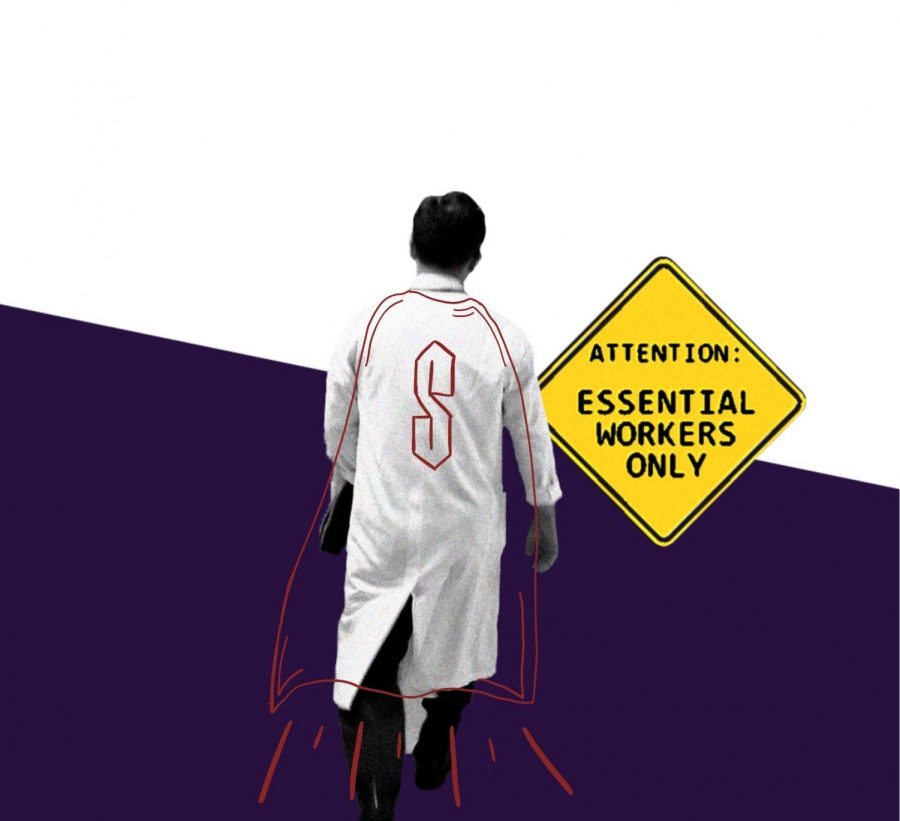Welcome to St. Louis, everybody. Either it is your first time here, or you’ve been a resident for long enough that you’ve started inquiring about which high schools your new friends attended. If you’re wondering, this is a great city, but it’s also home to one of the most vivid class divides you’re likely to come across anywhere in America. If you haven’t noticed this separation between upper and lower classes, it’s because it is so well ingrained in the way the city works that it just seems natural.
Here, I’ll show you. We’ll leave from the Busch Student Center and walk north on Grand Blvd. We pass through the “arts district,” check out the shows coming to the Fox, admire the architecture of Powell hall, and then, with barely a hint of fanfare, we come to Delmar. We look around the intersection to the left and right of us before we cross Delmar, the glory of the entertainment venues. In front of us, across Grand is the VA hospital and a parking lot. Uh oh. We keep walking. Soon we are surrounded by run down housing, paycheck loan centers, a school that looks more like a prison, and the occasional church. All we did was cross over Delmar and keep heading north, and we witnessed a sharp change in the socioeconomic status of our surroundings.
This is all it takes in St. Louis to descend from upper class to lower: cross a street. You can see this phenomenon all over town: look behind those incredible houses on Lindell and all you see are run-down apartment buildings. Go a few blocks east of the Medical Campus and you see the same effect. Why, then, don’t we notice this? What is it about this city you’re all now a part of that makes it so easy to ignore those poorer than us, even when they live in our backyard or across our street?
Allow me to suggest an answer, or at least a good guess. You remember that “what high school did you go to?” thing from earlier? St. Louis is a city of private high schools, institutions of supposedly “better” education that people are willing to pay through the nose to have their kids attend. We are a city in which education only matters if it is expensive or if it can make us look good on a chart. If you can’t pay or can’t get in, what awaits you is a classroom filled with as many as 32 kids staffed by one teacher. It’s a system in which education is more or less impossible. So, we can bundle up and hide-away the people who are a problem on our data-sets. Once we’ve hidden them in school – and hidden them from school – we don’t have to see them ever again.
So how can we fix this? Small class sizes are key. If you’re in a class with, say, 25+ students, there’s simply no way that a teacher (or even in terms of college, a professor) can really teach us anything. I don’t mean that he or she can’t give us material to memorize – I mean that they cannot present us with material we need to know in a way in which we can internalize and put to use the information. Smaller class sizes equal more personal attention, more interaction, more discussion and more education. More education means more knowledgeable people, which means smarter decisions, which in turn means more people doing better things. See where I’m going with this? As a “survivor” of the St. Louis Public School system, a former student at one of the few smoothly functioning schools in the district, I have seen first-hand evidence that this works. We had smaller classes and more teacher interaction, and on the whole, students at my school received a higher quality of education than those at schools over-enrolled and under-staffed.
Economic status does not determine teach-ability. We can all learn, no matter what we have in our bank account. But how we’re taught can mean the difference between one of those nice houses on Lindell and a crappy apartment on the other side of the street. This is a more complicated and a more wide-spread issue than I can easily discuss within the column inches available to me, but I’d like to leave you with this: pay attention.
Notice the disparities and disconnects around you. Realize that we can change this, and we need to try to figure out how. I think it all comes down to education (i.e. smaller class sizes), but you might have an even better idea. If we can reduce or even eradicate the class divide – in St. Louis, across the country, or even around the world – we can ensure infinitely better lives for ourselves and others.
Noah is a sophomore in the College of Arts and Sciences










